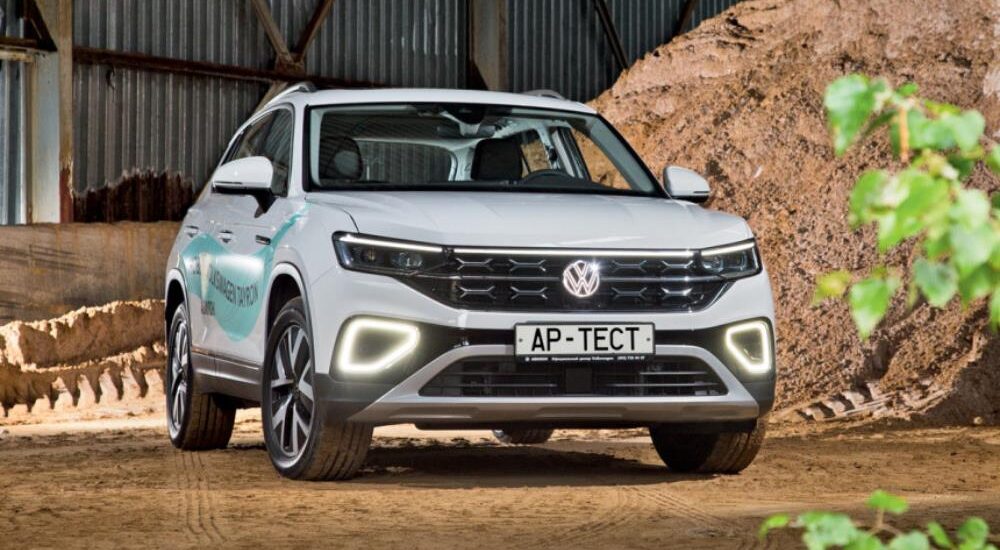The Volkswagen Group appears to be actively expanding its manufacturing presence in China. Simultaneously, the model range is undergoing changes too. But do any of these alterations impact the traditional Volkswagen quality?
There are already 17 operational factories in China – only one less than in Germany itself! In 2022, 3,184,500 vehicles from Volkswagen Group brands were sold in China, several thousand fewer than throughout Europe, including Eastern Europe. Once there was the Volkswagen Tiguan assembled in Kaluga, and now, there stands the Volkswagen Tayron, assembled at the FAW-Volkswagen plant in Tianjin. The latter, apart from its expansive DRL (Daytime Running Lights) lenses, also features luminous strips between the headlights and taillights, alongside both emblems.


In terms of size, the Tayron finds itself in a middle ground between the Tiguan and Tiguan Allspace models. However, since the seven-seater Allspace never reached the Russian market, let’s draw a comparison with the familiar base Tiguan.
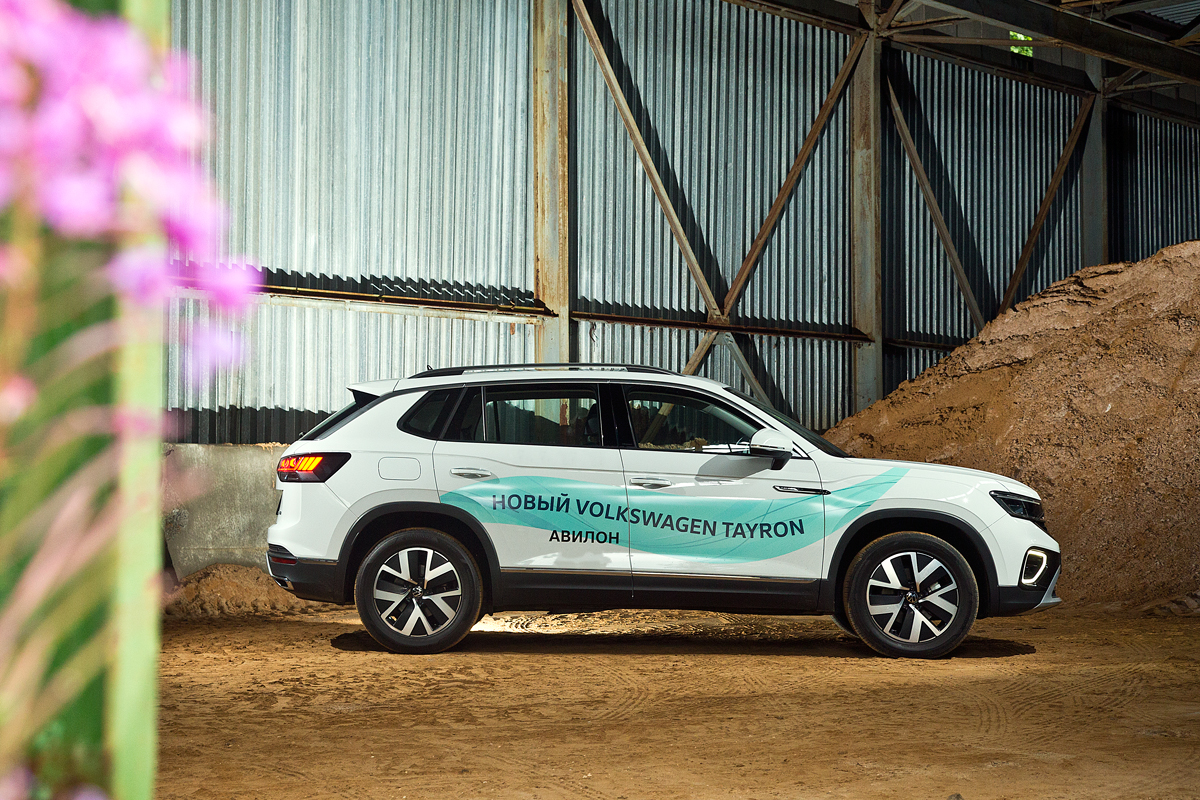
So, the Tayron is 8 cm longer, and its wheelbase is stretched by 52 mm. In the case of an accident, body panels from the Tiguan cannot be used. However, the suspension elements, engine, and gearbox remain the same. Under the hood of the test Tayron resides a two-liter turbo engine from the EA888 series, boasting a capacity of 186 hp. And don’t be confused by the nameplate on the door, “330 TSI” – according to Chinese tradition, these numbers correspond to the torque. This version is the mid front-wheel-drive variant. At Avilon, where we took this car for testing, they now offer older all-wheel-drive 380 TSI versions with the same two-liter engine boosted to 220 hp. The younger 280 TSI models are front-wheel drive, powered by the 1.4 TSI engines (EA211 series, 150 hp). The gearbox is only a seven-speed DSG preselective. And, of course, all engines and gearboxes for Chinese Volkswagens are localized, meaning they’re produced at local factories.

The equipment of the average 330 TSI version is far from poor: 18-inch wheels, full LED optics, keyless entry with sensors on both front doors, a panoramic roof with a sliding section. The cabin features seven airbags, three-zone climate control, power-adjustable front seats, a digital instrument cluster, and a large 12-inch multimedia display. Among the Eastern peculiarities is the lack of seat heating (even for the front ones!) and a heated windshield, despite the presence of an electrically heated steering wheel. It is surprising that cars of this specification are brought to us, as seat heating is available as an option in China.
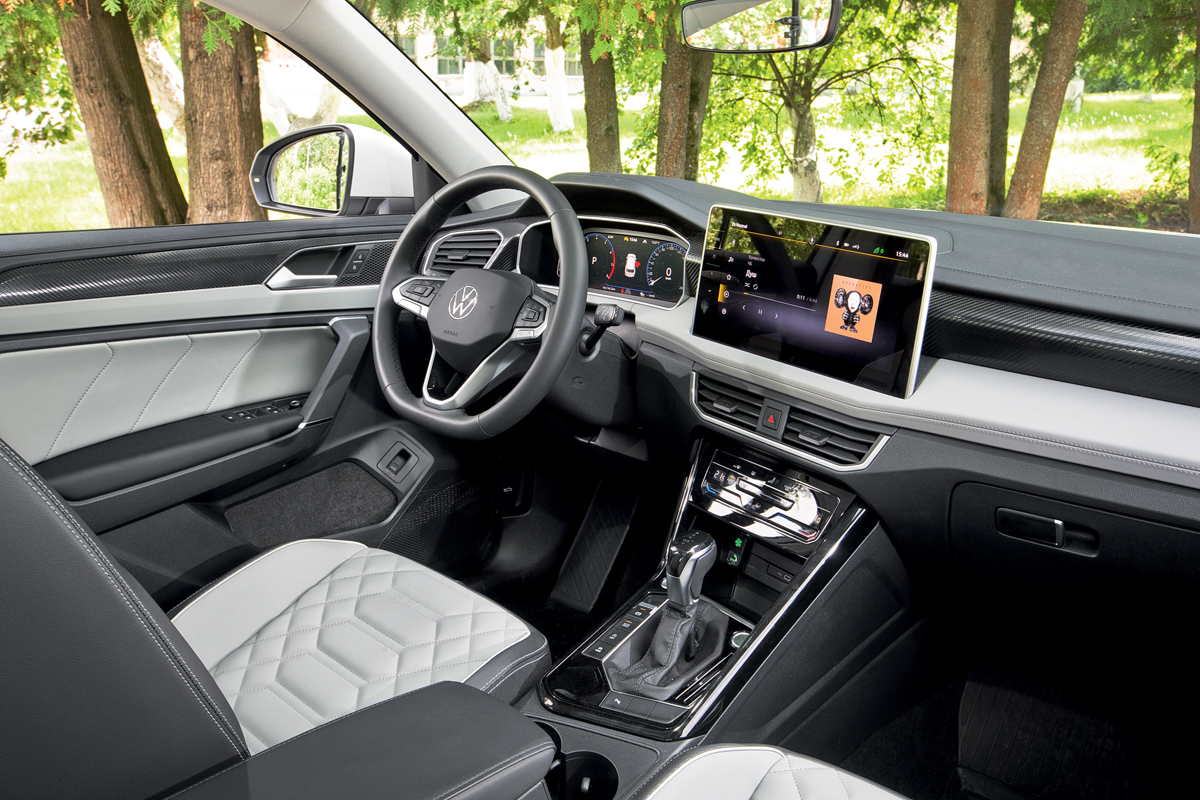
After a series of tests of originally Chinese cars, the seating geometry in the Tayron is just perfect. The seats have a long cushion, adjustable in angle, with optimally spaced lateral support rollers and dense padding. One downside is that the upholstery imitates genuine leather unconvincingly.

Fears that the display would be covered with Chinese characters upon ignition have not been confirmed. All menus are in English, displayed in clear large print. The only issue is that each time you start the system, it prompts you to register with a Chinese ID. However, by clicking on “Remind later,” you can access almost all the functionality. Settings, FM radio, and connecting your phone via Bluetooth are all quick and straightforward.

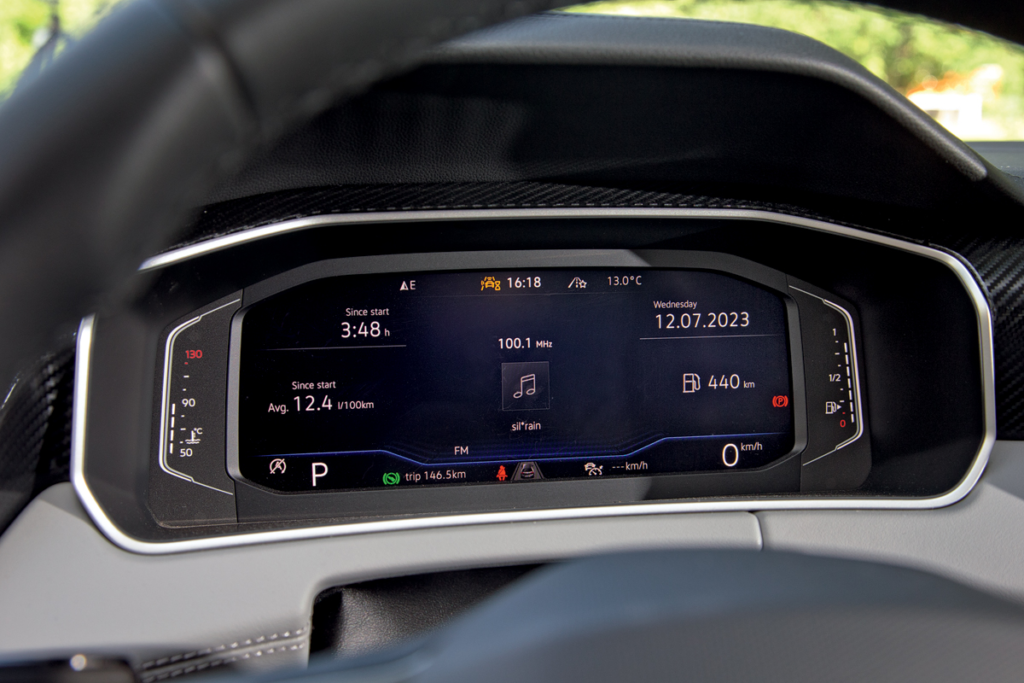
But most importantly, iPhone owners can utilize the Apple CarPlay service, even with a wireless connection! Yandex.Maps takes up the entire screen, showing traffic jams and a visual route, while Yandex.Music displays colorful widgets and Cyrillic song titles. This isn’t just available on the central display but also on the dashboard. “Chinese characters” only popped up a couple of times, appearing as hieroglyphs in the RDS line of certain radio stations.

In the rear, space abounds: I can sit behind myself with a gap of 5-6 cm in front of my knees. The conveniences Tiguan owners are accustomed to are all here – a dedicated climate control unit, hooks for clothing on the ceiling and central pillars. Generous door pockets are lined with soft rugs, and power windows are equipped with fully descending features. Most importantly, the seats can be individually moved by up to 18 cm, redistributing the available space between passengers and luggage.


The trunk, as expected, turned out to be slightly larger than that of the Tiguan, without any compromises. Handles for folding the seats, the option to adjust the floor to two levels, hooks for securing packages – there’s even special cutouts in the side panels for securing a curtain underneath. The fleecy upholstery throughout, instead of bare plastic, is also a nice touch.
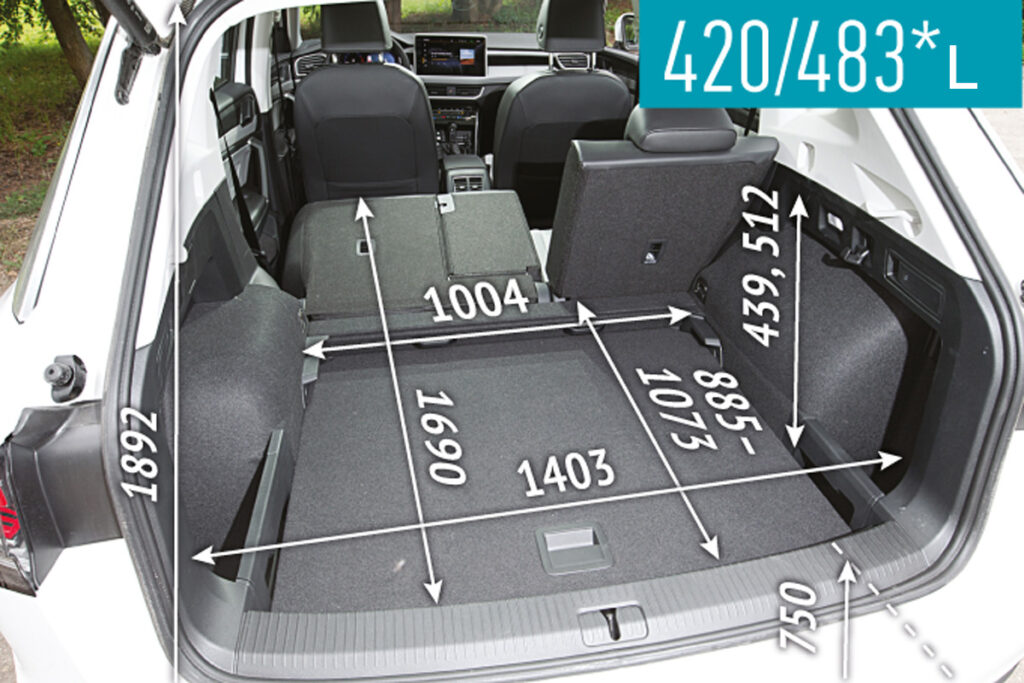

The combination of a two-liter turbo engine from the EA288 series and a “wet” seven-speed preselective DQ381 gearbox is already familiar from Tiguans and Kodiaks. The shifts remain quick, providing the same smoothness for economical driving at low speeds. The engine doesn’t lag, and city driving is comfortable with a smooth response from the accelerator.

For more spirited driving, you can switch to Sport or Custom mode, which allows separate adjustments for the powertrain, steering, and active cruise control. Speaking of the “cruise” function, it works well and can easily be switched to a more relevant speed limiter while driving in the city.
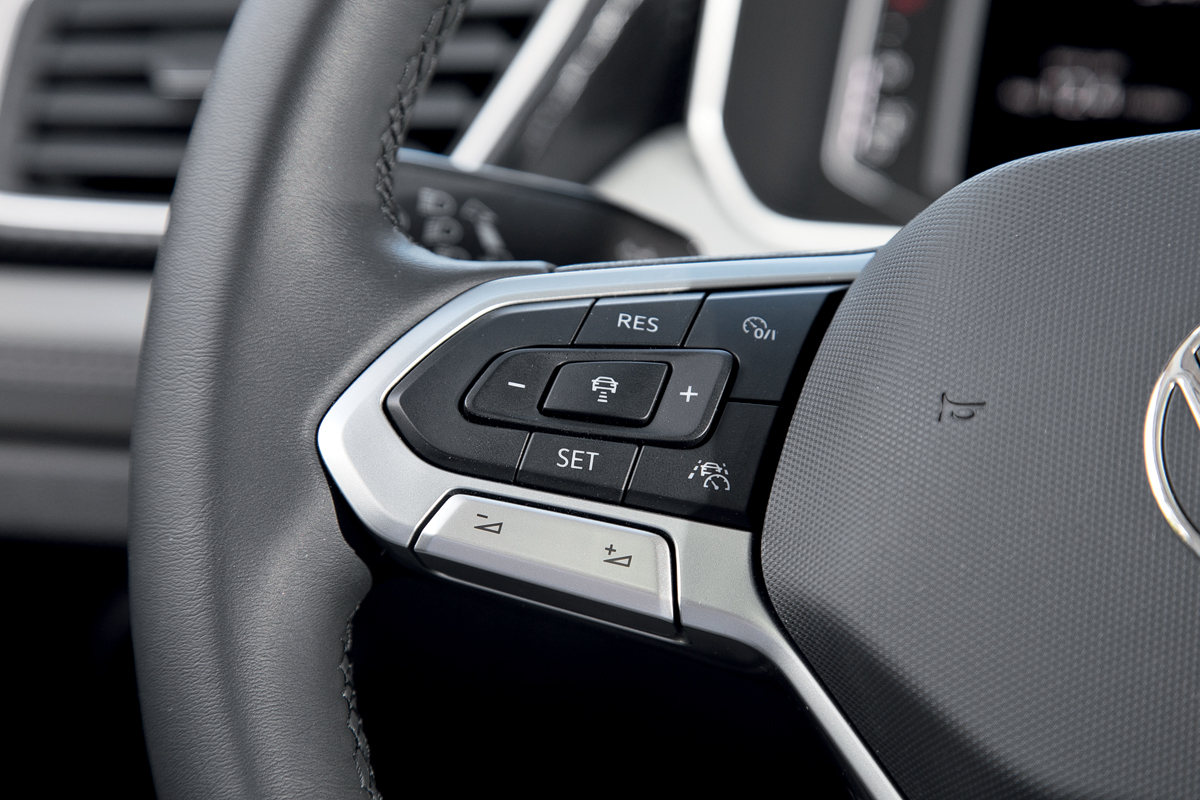
Of course, keen Volkswagen enthusiasts are eager for the performance numbers. After all, the figures found on Chinese websites can sometimes deviate significantly from reality. So, for the “three hundred and thirtieth” Tayron, the official acceleration to “hundreds” is claimed at 8.7 seconds. But what’s the reality behind it?
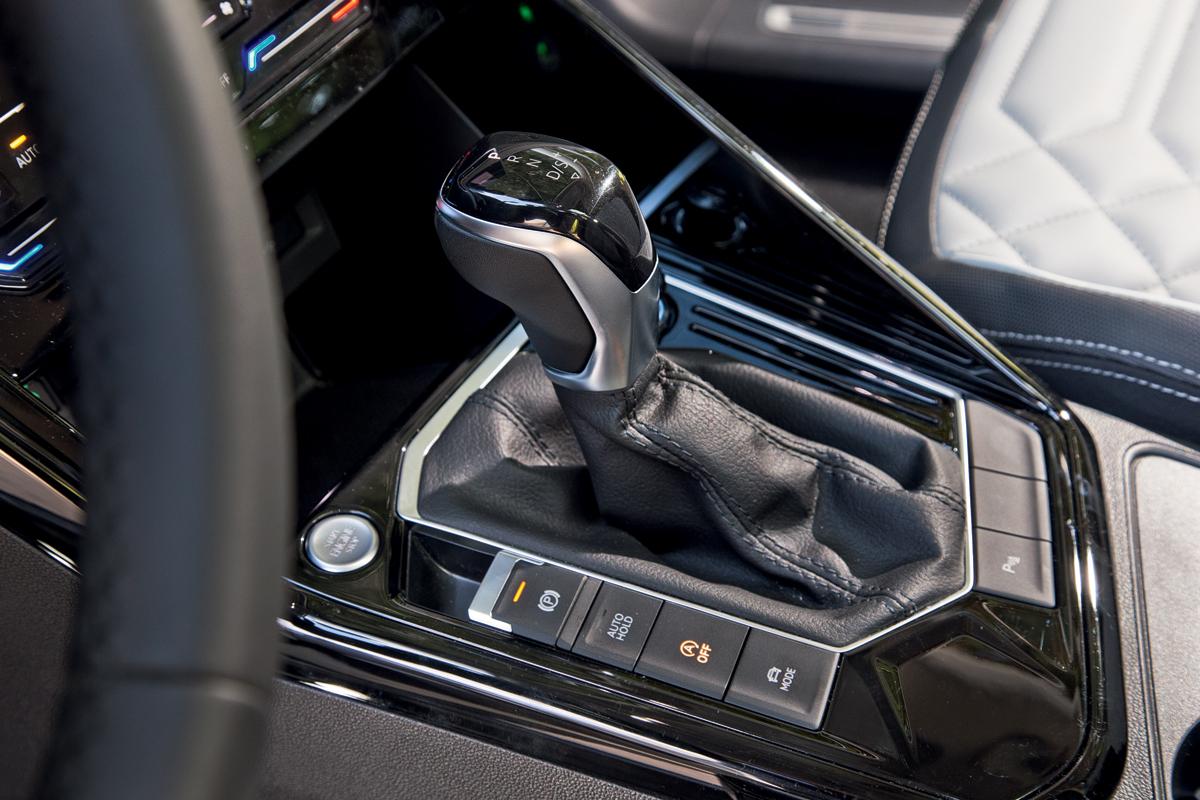
Turning off the traction control system (“ASR off”) via the menu, I press down on two pedals, and the message “Launch control activated” pops up on the central display. The engine revs up to 3300 rpm, and as I release the brake, the Tayron, front wheels squealing, launches forward. However, the electronics intervene somewhat rudely – slip is curtailed by reducing fuel supply, the yellow traction control symbol flashing on the dashboard. A couple of tenths are lost, but even after these adjustments, the Tayron nearly matches the official claim: 9.1 seconds to reach a hundred kilometers per hour. If you opt for a standard start without the “launch” sequence, then the time consistently hovers around ten seconds. Moreover, the speed limiter permits a top speed of 202.7 km/h (212 km/h on the speedometer). This is more than sufficient for a family-oriented crossover. For those who seek more vigorous performance, there’s always the option to enhance it through proven Stage 1 or Stage 2 software modifications.
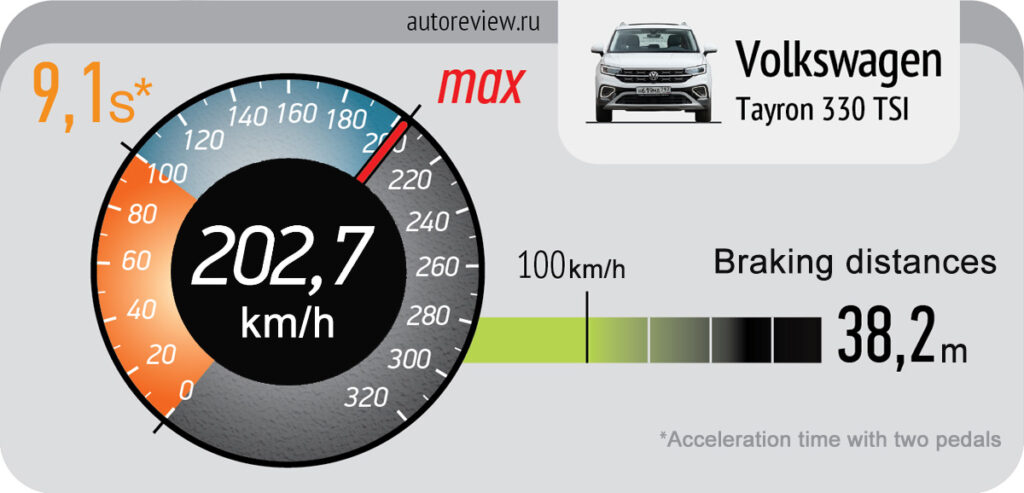
Some measurement results Autoreview
| Automobile | Volkswagen Tayron 330 TSI |
| Maximum speed, km/h | 202,7 |
| Acceleration time, s 0—50 km/h 0-100 km/h 0-150 km/h 0-200 km/h on the way 400 m on the way 1000 m 60-100 km/h (D) 80—120 km/h (D) | 3,6 9,1/9,7* 19,4 48,1 16,6 29,9 4,9 6,1 |
| Run-out, m from 50 km/h 130—80 km/h 160—80 km/h | 831 1169 1765 |
| Cold brakes from a speed of 100 km/h Way, m Deceleration, m/s2 | 38,2 10,1 |
However, my recommendation would lean towards considering a tire change: the Tayron comes equipped with decent Korean Hankook Ventus S1 evo3 SUV tires, but the “Made in China” label seems to hint at a simplified rubber compound. Initial wheel spin and, more significantly, somewhat lackluster deceleration provide this impression. The braking distance from 100 km/h exceeds 38 meters, whereas the Tiguan and Kodiaq, riding on Continental and Pirelli tires respectively, stopped in our tests at just over 35 meters.
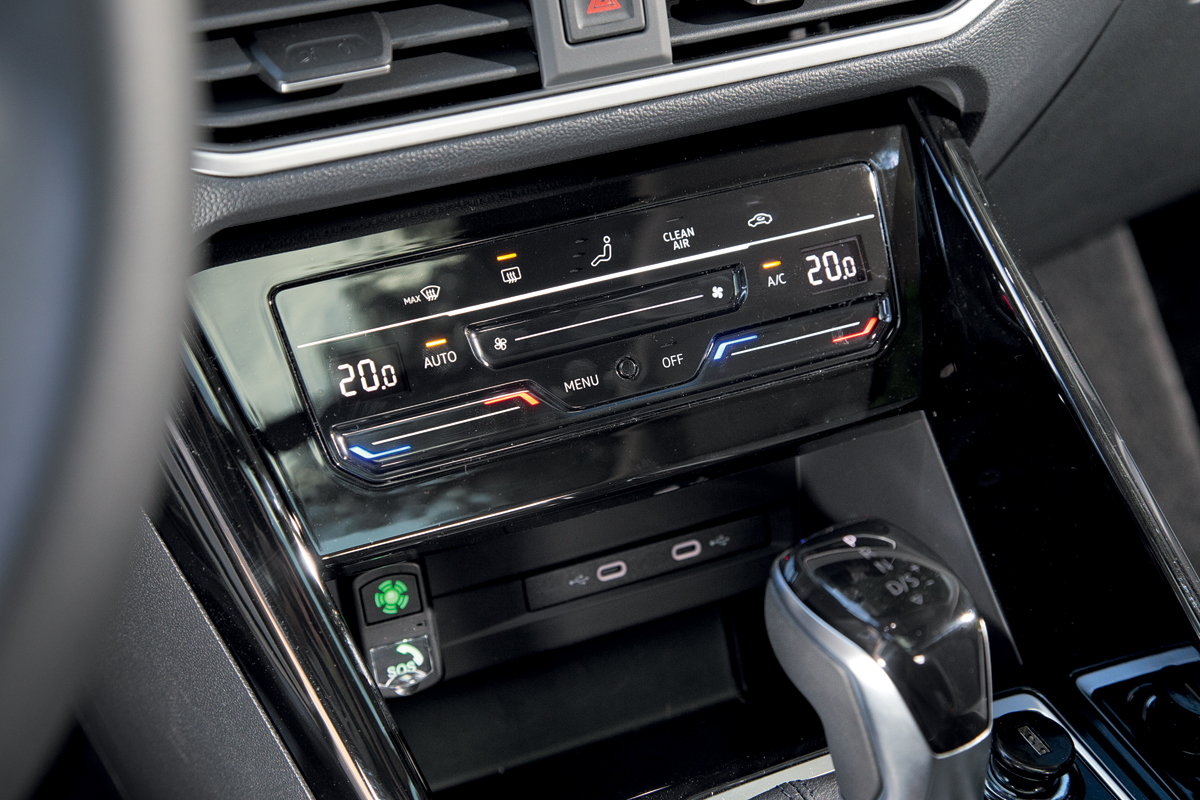
On the brighter side, the ABS operates flawlessly, and when driving in normal modes, managing deceleration is a delightful experience. The brake pedal feels remarkably responsive, and the brake system’s behavior is nearly linear: the harder you press, the more deceleration you receive.
The second aspect that makes driving a Volkswagen truly enjoyable is the adeptly tuned steering. The responsiveness of the steering is impeccable – precise, without any unnecessary abruptness. The steering wheel provides minimal artificiality, offering a clear understanding of what’s transpiring with the front wheels and the car as a whole.
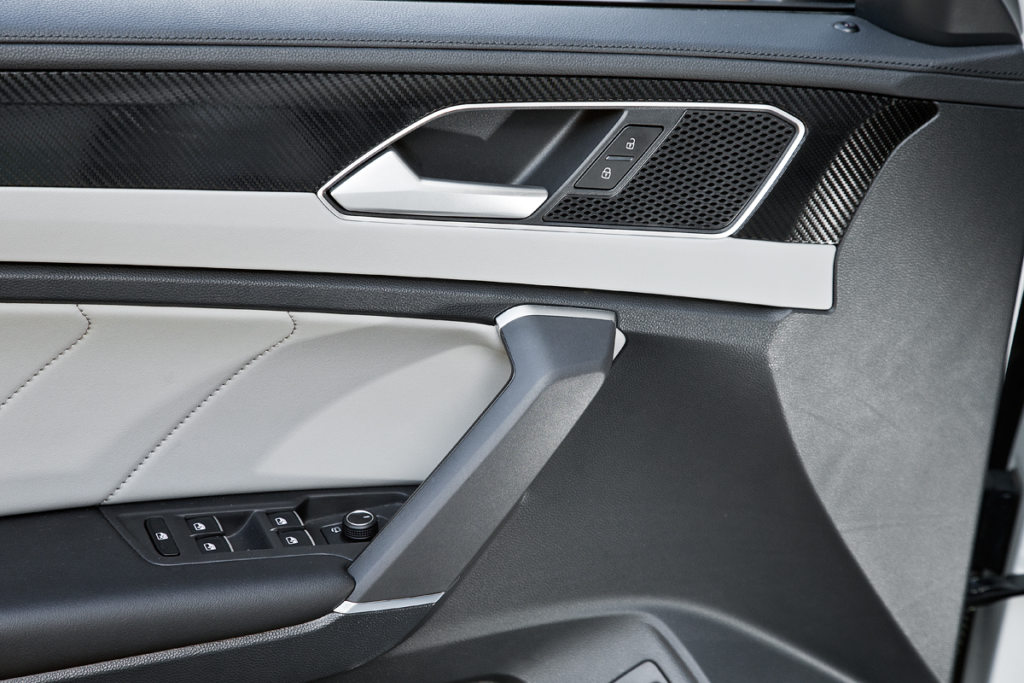
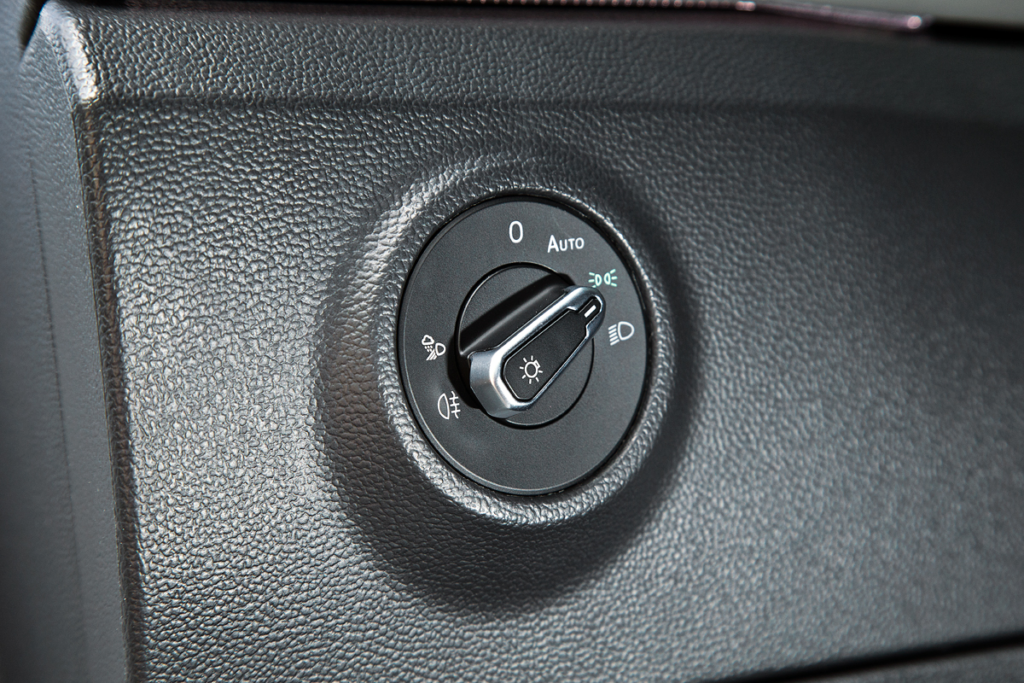
In ordinary modes, the handling approaches the benchmark for the crossover class. Nevertheless, at the limits, the trademark excitement appears to be missing. While a Tiguan, even with an unstinting stability system, can race along mountain roads rapidly, sharply, and with controlled slips, the Tayron tends to lose momentum… through its steering. A sharp turn of the steering wheel during a cornering limit is enough to decelerate the speed to a noticeably cautious level. Moreover, my attempts to simulate a routine lane change resulted in a veer accompanied by abrupt braking! The unyielding stability system, instead of gently slowing down a single wheel, engages with two or even three wheels, causing the speed to plummet by half!

Suspension? There are no surprises here. Pleasant density on the asphalt waves, but in general, the average level of comfort. Vibrations pass through the seams and joints, and you won’t go fast on uneven primer with holes. Actually, like any Tiguan.

The front-wheel drive Tayron 280 TSI (150 hp) now costs 3.6 million rubles. The price of the two-liter version of the 330 TSI, as in our test, is already over 4 million, and the all-wheel drive 220-horsepower Tayron is even more expensive than 5 million. In conclusion Tayron is quite a worthy Tiguan substitute.

Manufacturers’ data are highlighted in blue/Autoreview measurements are highlighted in black. Dimensions are in millimeters.
*Actual vehicle weight without driver, with full fuel tank and full process fluids
**Interior width at shoulder level in the first/second row of seats.
| Automobile | Volkswagen Tayron 330 TSI |
| Body type | Five-door station wagon |
| Number of places | 5 |
| Trunk volume, l | 506—1590* |
| Curb weight, kg | 1730 |
| Engine | Gasoline, direct injection and turbocharging |
| Location | Front, transverse |
| Number and arrangement of cylinders⠀ | 4, in a row |
| Working volume, cm³ | 1984 |
| Number of valves | 16 |
| Max. power, hp/kW/r/min | 186/137/4100—6000 |
| Max. torque, Nm/r/min | 320/1500—4050 |
| Transmission | Robotic, preselective, 7-speed |
| Drive unit | Front |
| Front suspension | Independent, spring, McPherson |
| Rear suspension | Independent, spring, multi-link |
| Front brakes | Disc, ventilated |
| Rear brakes | Disk |
| Base tire size | 235/55 R18 |
| Maximum speed, km/h | 210 |
| Acceleration time 0—100 km/h, s | 8,7 |
| Fuel consumption, l/100 km Urban cycle Suburban cycle Mixed cycle | 9,3 6,2 7,3 |
| Fuel tank capacity, l | 63 |
| Fuel | Gasoline AI-95 |
Photo: Dmitry Pitersky
This is a translation, you can read an original article here: Тигуанозамещение: наши испытания кроссовера Volkswagen Tayron

Published September 27, 2023 • 18m to read

